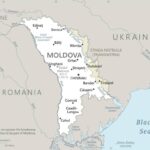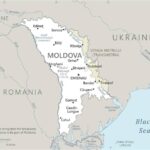The Central Intelligence Agency (CIA) has released samples from over 100 National Intelligence Daily (NID) articles about the Collapse of Communism in Eastern Europe (CCEE) between February 1989 and March 1990. The collection represents much of the Agency’s short-term analysis of events unfolding in Central and Eastern Europe (CEE), as popular opposition to Soviet misrule erupted and quickly surpassed anything the Communist regimes were prepared to understand or to which they could respond. The material also represents a major source of information and insight for US policymakers into what was happening in these countries, where they were heading, and which implications the collapse of Communist rule in Europe and the beginnings of the breakup of the Soviet Union had for Europe and the United States.
The CCEE refers to a series of demonstrations and revolutions that ended the Soviet-imposed Communist rule in Albania, Bulgaria, Czechoslovakia, East Germany, Yugoslavia, Poland, and Romania, and paved the way for the disintegration of Yugoslavia, Czechoslovakia and the Soviet Union. The CCEE also marked the beginning of the end of the Cold War between the Western liberal democracies and the Soviet Union and its satellites (Warsaw Pact).
The newly declassified intelligence demonstrates the accuracy of the Agency’s collection and analysis of the events unfolding in the padlocked CEE states. Despite the large volume of materials released, this is only a fraction of the CIA’s reporting on the CCEE.
After going through the more than 100 documents, we can draw the following conclusions:
- Open-Source Intelligence (OSINT) collected by the CIA’s Foreign Broadcast Information Service (FBIS) was the backbone of the NDIs.
- The developments in East Germany, Poland, Czechoslovakia, Hungary and Romania drew extra attention from Washington due to their specific geopolitical importance.
- East Germany was the main “frontline” between NATO and the Warsaw Pact, and a particular issue of concern for West Germany, a key US ally in the region. If the Communist regime in Berlin was to fall, the Agency was confident that re-unification with Bonn was a strong possibility.

Germans stand on top of the Wall in front of Brandenburg Gate in the days before it was torn down.
- In Czechoslovakia, Hungary and Poland, which experienced the mildest revolutions, over 135,000 Soviet Army troops were stationed. The withdrawal of Soviet forces from CEE would have significantly altered the balance of power in Europe in NATO’s favor. The three countries were also the fastest to enact unprecedented constitutional amendments and legislation in support of economic reform.
- Despite being affected by the domino effect of anti-Communist uprisings, Romania was seen as the Bloc’s last holdout due to the Ceausescu regime’s violent crackdown on protests. Not only was the Ceausescu regime strongly entrenched, but it also sought external support from other rogue regimes – particularly North Korea, Iran and Libya – to escape international isolation. Romania was the only Eastern Bloc country whose citizens overthrew the Communist regime violently.
- The CIA did not only extensively cover the Romanian revolution, but it also issued periodic situation reports and net estimates. One of the many valid assessments of the Agency analysts was that sustained violence against demonstrators would result in an alliance between the Romanian Armed Forces and disgruntled Communist officials (such as Ceausescu’s successor, Ion Iliescu, who was identified as a potential supporter in the CIA analyses) against Ceausescu and his family.

December 1989: Thousands of Romanians rallied in front the the Communist Party’s politburo in Bucharest.
- The Western Balkans were sparsely featured in the NDI dump. However, the risk of prolonged conflict as an effect of the CCEE was judged to be the highest in this region. The CIA feared that Albania would become a “second Romania” due to the regime’s opposition to change, while Yugoslavia was believed to be on the brink of collapse, leaving behind a mosaic of inter-ethnic armored conflicts.
- The CIA was confident that the Kremlin, paralized and weak, would not risk everything by launching punitive actions to suppress the revolutions that were overthrowing its “satellite” regimes in the Warsaw Pact. One analysis even observed how Lithuanian and Baltic nationalists were capitalizing on the Kremlin’s weakness by “pushing towards de facto independence, as a prelude for outright separation”.
- The CIA was concerned that expectations among CEE populations were dangerously high. In the Special Analysis “Long Road Ahead to Economic Well-Being”, the Agency argued that the benefits of economic transition from a command economy to a free market system was a long-term game with few immediate positive effects. The Agency certainly remained open to the possibility that disenfranchised workers could stage counter-revolutions.
- Russia Bombs Maternity Ward & Children’s Hospital in Mariupol As Part of Siege - 10 March 2022
- T-Intell’s OSINT Training Marks One Year Anniversary - 18 November 2021
- IS-K Never Left the Battlefield - 27 August 2021









